
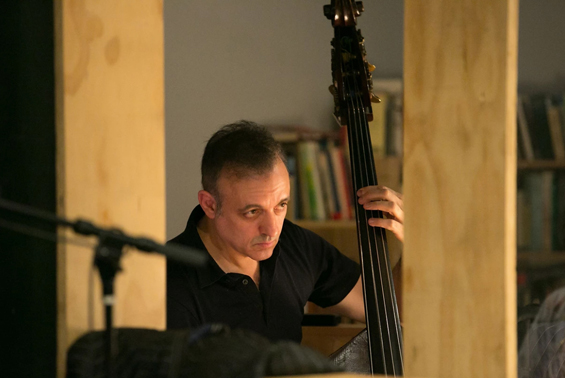
photo: John Marolakos
FIVE QUESTIONS WITH GREGG AUGUST
Gregg August's Dialogues on Race, Volume One (reviewed here; available here) deserves to be regarded as one of 2020's most important recordings, jazz or otherwise. To address the subject of race relations in the United States, the bassist convened a large instrumental ensemble, three vocalists, and a narrator to perform his extended suite, which was co-commissioned by the Jazz Gallery and the Jerome Foundation and first performed in April 2009. That it was written more than a decade ago is itself remarkable, given how relevant its themes and topics are to what's happening today.
A graduate of the Eastman School of Music and Juilliard, August brings to the project a wealth of experience, the versatile bassist having established himself in jazz, classical, and Latin contexts. In addition to four solo releases on his Iacuessa Records label, he's recorded nine albums with the JD Allen Trio and won five Grammy awards as a member of Arturo O'Farrill's Afro-Latin Jazz Orchestra. August is also a member of the Orpheus Chamber Orchestra, the American Composers Orchestra, Westchester Philharmonic, and Orchestra of St. Luke's. textura recently spoke with him about the new release and some of the challenges associated with tackling such a difficult topic.
1. It would be hard to think of a release more relevant to the time of its release than Dialogues on Race, Volume One. Is its timeliness something you somehow foresaw or is it an incredible example of synchronicity?
The record was originally supposed to drop April 10th. Because of the pandemic, the CD manufacturer closed and couldn't fill the order. When they reopened in mid-May, we decided on August 21st. Then, on Memorial Day, all hell broke loose with the killing of George Floyd. So no, I didn't plan the release around the protests. Having said that, these issues have always been with us. Trying to find the “right time” to release the record never entered my mind because it knew it would always be relevant.
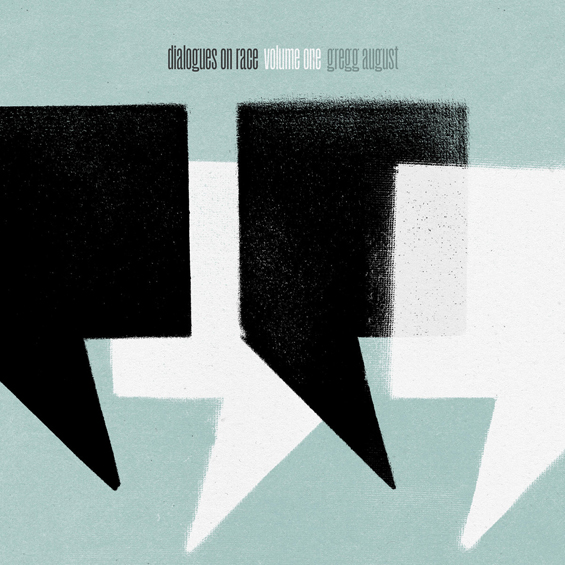
2. How did you decide on the structure of the work, its intermixing of instrumental and vocal pieces and the three iterations of “Your Only Child”? Were there precedents that influenced you or did the structure emerge of its own accord?
My original idea was to build a structure around attaching each member of the group to a particular poem, where it would become their feature. Some of that did end up in the piece. For example, “I Rise” was John Bailey's feature (trumpet), or “Sweet Words on Race” was for Donald Edwards and Mauricio Herrera (drums/congas). “Sky” was JD Allen's feature. I chose those instruments because of the text of the particular poem I was utilizing. I was thinking of “tone poems,” where music alone can evoke specific ideas or images.
In terms of deciding which poems I wanted sung, it had to do with the poems themselves, and if I could hear a melody. That was the case with "I Sang in the Sun.” I could easily feel the rhythm of the text, and I also liked its melancholic character.
But it was “Your Only Child” that grabbed me early on, and I knew it would be central to the entire suite—the way it read, the power in it, the beautiful manner in which Marilyn Nelson pays tribute to the mother of Emmett Till. This poem spoke to me, and I could hear the melody immediately; the melody almost wrote itself. I then began incorporating elements of the melody, or motives into the other ‘movements.'
There was originally only one version of “Your Only Child,” the one with Frank Lacy singing, (first statement, male singer); I think of it as the “street version.” Then in 2017, I was at a contemporary music festival and was given the opportunity to perform at a museum in Massachusetts (MASS MoCA) amid a powerful exhibit titled Until by Nick Cave. It was a beautiful installation that was actually a commentary on gun violence and racism. I thought “Your Only Child,” with its text paying tribute to Mamie Till Mobley, would be the perfect thing to play in that setting. I quickly came up with a new arrangement that worked for the instruments I had on hand, (mainly strings), and discovered that Shelley Washington, a composition student at this festival, would be able to sing it. This new arrangement became an alternative rendition, a “reverential version.” At that point, I started to see the entire suite in a new light. Though Dialogues on Race is intended to help foster understanding of racial relations at large, it was becoming clearer to me the significance of what happened to Emmett Till and how the lessons of that injustice were just as relevant in modern times; after George Floyd, they turned out to be even clearer. The graphic images of Floyd's death, which everyone can see, requires no nuance. There's nothing anyone needs to say. He was murdered, in plain sight. Just as with Emmett Till, where everyone could see what had happened to him because his mother demanded people see him, there was no need to explain it. What those men did to him was and remains inexplicable. And they were acquitted … they walked. No one has gone to jail for his murder.
I decided I also wanted to play the theme of “Your Only Child” as a solo bass thing. Marilyn Nelson's words are so strong, and continue to resonate with me, and in recent weeks I created another version for string trio.
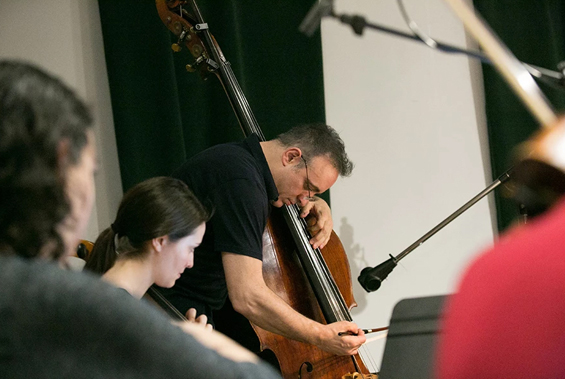
photo: John Marolakos
3. The personnel you assembled for the recording is incredible, to say the least, and the level of musicianship throughout is at a remarkably high level. Could you share with us a couple of personal favourite moments that happened during the recording process?
The moment that stands out to me was when Wayne Smith, our narrator on “Letter to America,” describes to the band about his knowing and working with Mamie Till Mobley on trying to abolish the death penalty in the the United States. Wayne is a family member, and I've always known he was doing high level work on behalf of Vietnam Veterans. But I didn't know about his work with Mamie Till. We were all entranced listening to him reflect on this woman's incredible ability to work towards a better society, despite what had happened to her son. We actually have video of Wayne speaking about her at the recording session.
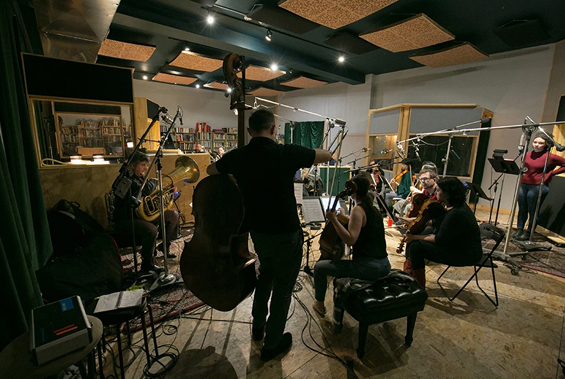
photo: John Marolakos
4. With regard to your treatment of the material and its race-related issues, no one would come away questioning your sense of purpose in the sincere and respectful way the subject matter has been handled. Yet it's conceivable that your right to address these issues could be questioned when as a ‘privileged white male' you haven't suffered first-hand the indignities non-whites have and can never truly know what their experience is like. How would you respond to such a charge?
It's a valid question, and I welcome the chance to address it. The motivation behind my delving into this subject was through personal relationships, with friends, with colleagues, and coming face to face with the reality that I didn't feel comfortable having conversations about race. A lot of this started to seep into my consciousness when I was living in Europe as I observed America from afar. I was learning to appreciate that the diversity in America was unique yet at the same time could see the dysfunction. I began to see that these cultures really didn't live together but instead lived in their own versions of America. I was realizing I didn't know many things about American history, the things that helped create this modern American society. I thought for many years about this, long before I thought of writing a piece of music based on it. But I am a musician, and I process everything in my life, one way or another, through music. Working on this project has allowed me to dig more deeply and continue to understand the United States, our past and future. It will be a never-ending pursuit, which is why this record is Volume One . There's so much more to learn.
Focusing on Emmett Till I realize is also controversial. We know that Mamie Till Mobley opened that casket so all people could see her son; she said it many times throughout her life. Possibly, one could say she did it specifically so white America could see him, as this brutality was already well known to Black people. She felt that such an act would touch all humanity and help lead to change.
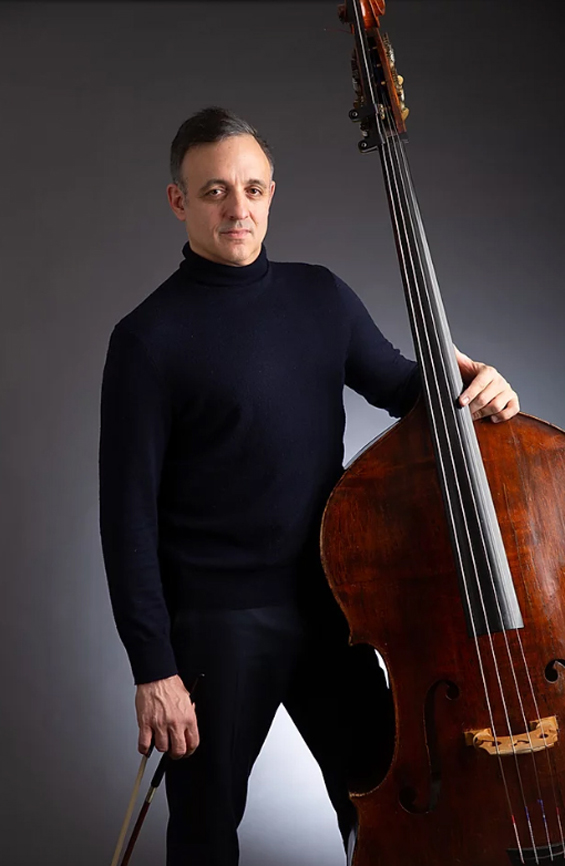
photo: John Marolakos
5. I was struck by the fact that, by your own admission, after Dialogues on Race, Volume One premiered in April 2009, you “ shelved [the] piece, even forgetting about it to some degree.” How do you explain your decision to set the piece aside when the time then would have seemed as ripe for the material as now?
There was a very brief period where we all celebrated ‘ progress ' so possibly there was less sense of urgency. Also, most of us make records when feel we have something to say, that it ' s the arrival of time spent working out musical ideas, rehearsing/gigging. The recording is the document. With Dialogues, there were musical things within myself I needed to develop further. The music wasn ' t there yet, because I wasn ' t there musically with myself, if that makes sense. And I knew this project was going to take everything I had, musically and beyond. I was going have to dig deeper into the subject, research further, educate myself more. I suppose the delay may have been me challenging my own commitment to it, because I knew it was going to consume me.
Bonus: In drawing on the talents of men and women of different races, generations, and cultural backgrounds, Dialogues on Race, Volume One could be seen as the realization in microcosm of a possible future for the U.S., a situation where matters of race are addressed head-on and reparations and advances made. Was one of your goals for the project that it could be looked upon in such symbolic terms?
There was no design behind my choosing the musicians for any reason other than their musicianship. I've played with all of them in various situations, so I knew what they could do. I knew I needed stylistically flexible players, cats that could read, but most importantly, could bring their own thing to it. Some of the best moments I think are those openings of the tracks when just two or three of the players are improvising or conversing with each other.
website: GREGG AUGUST
August 2020![]()